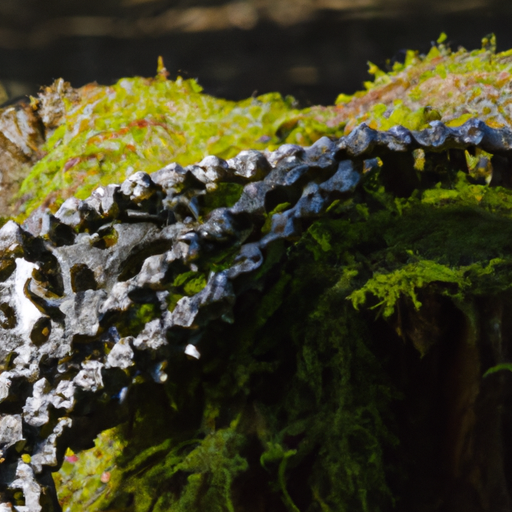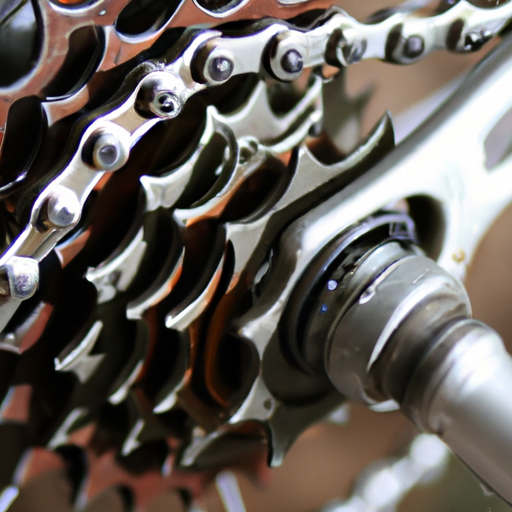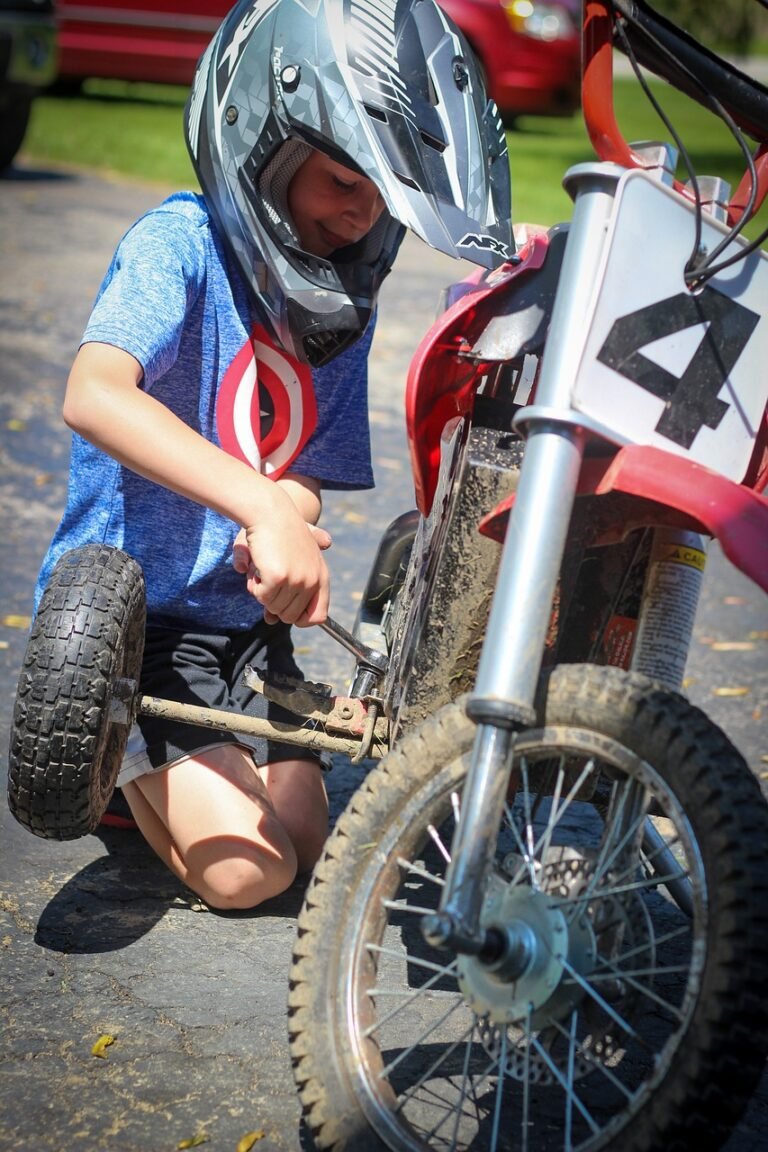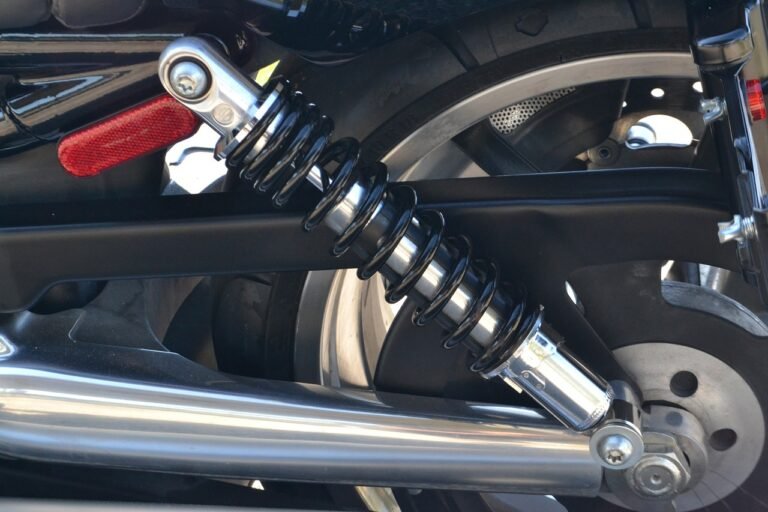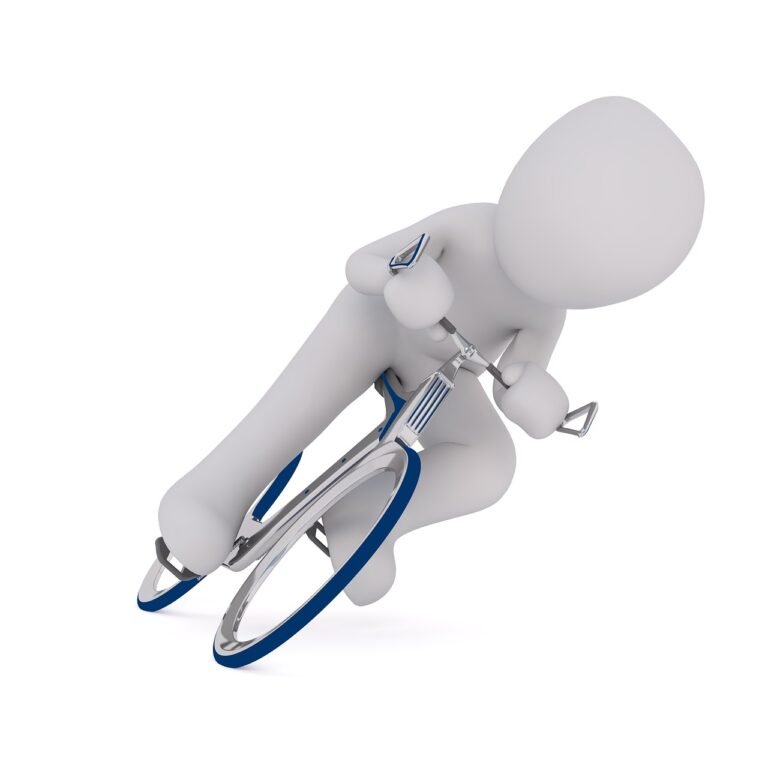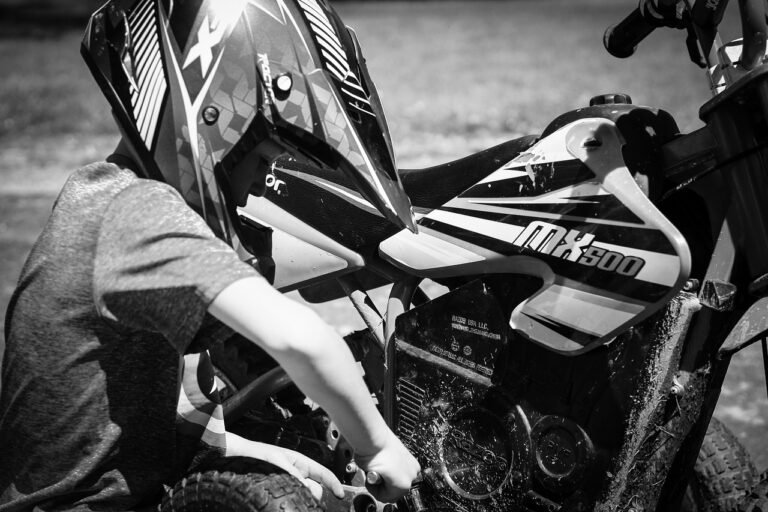How Often Should I Clean My Bike Chain?
Maintaining a clean bike chain is vital for ensuring optimal performance and longevity of your bicycle. But how often should you be cleaning it? Keeping your chain clean not only reduces friction and wear, but also prevents corrosion and extends the lifespan of other components. In this article, we will explore the factors that determine the frequency of chain cleaning and provide some useful tips to help you keep your bike running smoothly and efficiently. So, let’s get started and find out how often you should be giving your bike chain some much-needed TLC!
Factors that determine frequency of chain cleaning
Conditions of use
The conditions in which you ride your bike play a crucial role in determining how often you should clean your chain. If you frequently ride in dusty or muddy environments, your chain is likely to accumulate dirt and grime more quickly. Similarly, if you ride in wet conditions, your chain can easily become caked with mud, requiring more frequent cleaning. On the other hand, if you primarily ride on clean and dry roads, your chain may not need to be cleaned as frequently.
Riding style
Your riding style also factors into the frequency of chain cleaning. If you engage in aggressive riding, such as sprinting or hard accelerations, your chain is more likely to gather dirt and require more frequent cleaning. Additionally, if you frequently shift gears or subject your chain to high levels of torque, it may wear out faster, necessitating more frequent cleaning and maintenance.
Climate and weather
The climate and weather in your location can significantly impact how often you should clean your bike chain. In humid and tropical regions, moisture in the air can cause the chain to rust or corrode faster, requiring more frequent cleaning. Conversely, in arid and dry climates, the accumulation of dust and dirt may be more rapid, prompting the need for more regular chain cleaning. It is important to consider the local climate and weather conditions when determining the cleaning frequency for your bike chain.
Terrain
The type of terrain you ride on also affects how often you should clean your bike chain. If you frequently ride off-road or on rough terrains, your chain is likely to be exposed to more dirt, mud, and debris, and may require more frequent cleaning as a result. Similarly, if you regularly ride in hilly or mountainous areas, the increased strain on your drivetrain may necessitate more frequent cleaning and maintenance.
Type of chain lube
The type of chain lube you use can impact the frequency of chain cleaning. Some lubes are designed to be long-lasting and require less frequent application, while others may need to be reapplied more frequently. It is important to follow the manufacturer’s recommendations for the specific chain lube you use to ensure optimal performance and longevity. Experimenting with different types of chain lubes can help you find the one that best suits your needs and requires the least frequent cleaning.
Signs that indicate the need for chain cleaning
Visible dirt and grime
One of the most obvious signs that your bike chain is in need of cleaning is the presence of visible dirt, grime, or debris. If you notice a layer of dirt or grease accumulated on your chain, it is a clear indication that it needs to be cleaned. Regularly inspecting your chain for any visible dirt or grime can help you determine when it is time for a thorough cleaning.
Chain noise
If your chain starts making unusual noises while you ride, it could be a sign of dirt and grime buildup. A clean and well-lubricated chain should operate quietly and smoothly. However, if you hear grinding, squeaking, or clicking noises coming from your chain, it is likely time for a cleaning.
Chain skipping or jumping
If your chain skips or jumps when you pedal, it is an indication that it needs to be cleaned. Buildup of dirt and grime can interfere with the chain’s movement, causing it to skip or jump off the gears. Regular cleaning can help prevent such issues and ensure smooth gear shifting.
Difficult gear shifting
If you experience difficulty shifting gears, especially when transitioning between different chainrings or cogs, it could be a sign of a dirty chain. A clean and well-maintained chain allows for smooth and precise gear changes. However, if you find yourself struggling to shift gears smoothly, it may be time to clean your chain.
General guidelines for chain cleaning frequency
Weekly cleaning
For riders who frequently encounter dirt, mud, or wet conditions, weekly chain cleaning is recommended. This ensures that any accumulated dirt, grime, or moisture is promptly removed, preventing potential damage to the chain and drivetrain components. Additionally, weekly cleaning allows for optimal performance and reduces the likelihood of chain-related issues.
Every 100 miles
Regardless of the conditions or riding style, it is generally recommended to clean your chain every 100 miles. This guideline ensures that your chain is regularly maintained and prevents the buildup of excessive dirt, grime, and debris that can lead to premature wear and reduced performance.
Monthly cleaning
For riders who primarily ride on clean roads and in dry conditions, a monthly cleaning schedule may be sufficient. This frequency helps remove any minor dirt or dust buildup and ensures that the chain remains in good condition. However, it is essential to closely monitor the chain’s cleanliness and performance to determine if more frequent cleaning is required.
As needed basis
In addition to the general guidelines mentioned above, it is crucial to clean your chain on an as-needed basis. If you notice any signs of dirt, grime, or chain-related issues, it is important to address them promptly by cleaning the chain. Regular inspection and monitoring of your chain’s condition will help you determine when additional cleaning is necessary.
Step-by-step guide to cleaning your bike chain
Gather necessary supplies
Before you begin cleaning your bike chain, gather all the necessary supplies. You will need a chain cleaning tool or a brush, a degreaser, a clean rag or towel, a cassette cleaning brush, and a lubricant suitable for your chain.
Prepare your bike
Secure your bike in a bike stand or flip it upside down so that it is stable and the chain is accessible. It is also a good idea to put down a protective mat or towel to catch any drips or debris during the cleaning process.
Degrease the chain
Apply a degreaser to the chain, focusing on the rollers and between the links. You can use a chain cleaning tool or a brush to agitate the degreaser and remove any dirt, grime, or old lube from the chain. Repeat this step until the chain is thoroughly cleaned.
Clean the cassette and chainrings
Using a cassette cleaning brush, clean the individual cogs on the cassette. Pay special attention to removing any dirt or debris that may have accumulated between the cogs. Similarly, use a brush to clean the chainrings, ensuring that they are free from any dirt or grime.
Lubricate the chain
After cleaning the chain, it is important to apply a lubricant to ensure smooth operation and prevent rust or corrosion. Apply a small amount of chain lube to the chain, focusing on the individual rollers. Allow the lube to penetrate for a few minutes before moving to the next step.
Wipe off excess lube and reassemble
Using a clean rag or towel, carefully wipe off any excess lubricant from the chain. It is important to remove any excess lube to prevent dirt and grime from sticking to the chain. Once you have wiped off the excess, reassemble the chain, and ensure it is properly tensioned and in the correct position.
Proper chain maintenance tips for prolonging chain life
Regular inspection and cleaning
Regularly inspecting your chain for any signs of dirt, grime, or wear is essential for its longevity. By promptly addressing any issues, you can prevent further damage and prolong the chain’s life. Additionally, regular cleaning ensures that any accumulated dirt, grime, or debris is promptly removed, preventing premature wear.
Avoiding excessive lubrication
While lubrication is important for a smooth and efficient chain, it is crucial to avoid excessive lubrication. Over-lubricating the chain can attract more dirt and grime, leading to increased wear and reduced performance. Follow the manufacturer’s recommendations for the appropriate amount of lubricant to use and wipe off any excess after applying.
Using appropriate chain lube
Choosing the right chain lube for your specific needs is essential for proper chain maintenance. Different types of lubes are available, such as wax-based, dry lubricants, wet lubricants, and ceramic lubes. Consider factors such as the conditions you ride in, the type of terrain, and the desired longevity of the lube when selecting the appropriate one for your chain.
Proper storage
When not in use, storing your bike in a dry and clean environment can help prolong the life of your chain. Moisture and exposure to the elements can lead to rust, corrosion, and premature wear. Using a bike cover or storing your bike indoors can help protect it from these potential damages.
Replacing worn-out parts
Regularly monitor the condition of your chain and drivetrain components. If you notice excessive wear or elongation in the chain, it is crucial to replace it promptly. A worn-out chain can cause accelerated wear on other drivetrain components, leading to more extensive and costly repairs. Replacing the chain as needed will help maintain the overall performance and longevity of your bike.
Common mistakes to avoid during chain cleaning
Using too much force
When cleaning your bike chain, it is important to use gentle and controlled motions. Using excessive force can damage the chain or other drivetrain components. Avoid scrubbing or brushing the chain vigorously and opt for a more controlled and consistent cleaning technique.
Using harsh cleaning agents
While it may be tempting to use strong cleaning agents or solvents to remove stubborn dirt or grime, it is important to avoid harsh chemicals that can damage the chain’s components. Stick to specially formulated bike degreasers that are designed to effectively clean the chain without causing any harm.
Neglecting other drivetrain components
During the chain cleaning process, it is important to pay attention to the entire drivetrain, including the cassette and chainrings. Neglecting these components can lead to decreased performance and premature wear. Make sure to clean and inspect all drivetrain components regularly to ensure optimal performance and longevity.
Skipping the degreasing step
Skipping the degreasing step in the chain cleaning process can leave behind stubborn dirt, grime, and old lube. Degreasing is essential for thoroughly cleaning the chain and removing any built-up residue. Skipping this step can lead to decreased performance and potential damage to the chain and drivetrain components.
Over-lubrication
As mentioned earlier, using excessive lubricant can attract more dirt and grime, leading to increased wear and reduced performance. Apply the appropriate amount of lubricant as recommended by the manufacturer and make sure to wipe off any excess after lubricating the chain.
Benefits of regular chain cleaning
Improved shifting performance
Regular chain cleaning ensures smooth and efficient gear shifting. A clean and well-maintained chain reduces friction and allows for precise and quick gear changes. This improves your overall riding experience and enhances the performance of your bike.
Prevention of drivetrain wear
A dirty or poorly maintained chain can cause accelerated wear on other drivetrain components, such as the cassette and chainrings. Regular cleaning removes dirt, grime, and debris that can cause premature wear and damage. This helps prolong the life of your drivetrain and reduces the need for costly repairs or replacements.
Extended chain and cassette life
Proper chain cleaning and maintenance significantly extend the life of your chain and cassette. Regular cleaning removes dirt, grime, and debris that can cause accelerated wear. By preventing excessive wear, you can enjoy a longer lifespan for these components, saving you money in the long run.
Reduced maintenance costs
Regular chain cleaning and maintenance can help reduce overall maintenance costs. By preventing excessive wear and damage to your drivetrain components, you can minimize the need for costly repairs or component replacements. Investing a little time in regular chain cleaning can save you money in the long term.
Understanding different types of chain lube
Wax-based lubes
Wax-based lubes are popular among road cyclists and those seeking a clean and low-maintenance option. They typically come in liquid or solid form and, when applied, create a protective wax coating on the chain. Wax-based lubes are known for their cleanliness and ability to repel dirt. However, they may require more frequent application compared to other types of lubes.
Dry lubricants
Dry lubricants, as the name suggests, are designed for use in dry conditions. They typically come in a liquid or aerosol form, and when applied, they quickly dry, leaving behind a thin lubricating film. Dry lubes are known for their ability to repel dirt and reduce friction. They require more frequent reapplication in wet or muddy conditions.
Wet lubricants
Wet lubricants are designed for use in wet or humid conditions. They are typically heavier and more viscous than dry lubes, providing long-lasting lubrication and protection against moisture. Wet lubes are more resistant to washout caused by rain or water crossings, making them suitable for riders who frequently encounter wet conditions.
Ceramic lubes
Ceramic lubes are a premium option known for their superior lubrication and reduced friction. They often contain small ceramic particles that enhance the lubricating properties and provide excellent protection against wear. Ceramic lubes are popular among performance-oriented riders and those seeking optimal efficiency.
Factors to consider when choosing a chain cleaner
Compatibility with drivetrain components
When choosing a chain cleaner, it is crucial to ensure compatibility with your specific drivetrain components. Different cleaners may have different chemical compositions that can potentially harm certain materials or finishes. Verify that the cleaner is safe for use on your chain, cassette, chainrings, and other drivetrain parts before making a purchase.
Environmental impact
Consider the environmental impact of the chain cleaner you choose. Look for products that are biodegradable and environmentally friendly. Opting for eco-friendly options helps minimize your carbon footprint and ensures the chemicals used in the cleaner do not harm the environment.
Ease of use and application
Choose a chain cleaner that is easy to use and apply. Look for cleaners that come with a spray or applicator, making it convenient to distribute the cleaner evenly on the chain. Additionally, choose a cleaner that requires minimal effort and time for effective cleaning.
Cost
Consider your budget when selecting a chain cleaner. Prices can vary depending on the brand, size, and specific features of the cleaner. While it is essential to choose a high-quality cleaner, it is also important to find one that fits within your budget.
Finding the right balance for your bike chain cleaning routine
Trial and error
Finding the right balance for your bike chain cleaning routine may require some trial and error. Experiment with different cleaning frequencies and observe how your chain performs under various conditions. Pay attention to any signs of dirt, grime, or chain-related issues and adjust your cleaning routine accordingly.
Personal preference
Your personal preference and riding style should also be taken into account when determining the frequency of chain cleaning. Some riders may prefer to have a squeaky clean chain at all times, while others may be more comfortable with a slightly dirty chain. Find a balance that suits your preferences and riding style while ensuring optimal performance and durability.
Consulting bike professionals
If you are unsure about the appropriate chain cleaning routine for your specific bike and riding conditions, consider consulting with bike professionals. They can provide valuable insights and recommendations based on their expertise and experience. Professionals can help you find the right balance for your chain cleaning routine and ensure that you are taking the best care of your bike.

